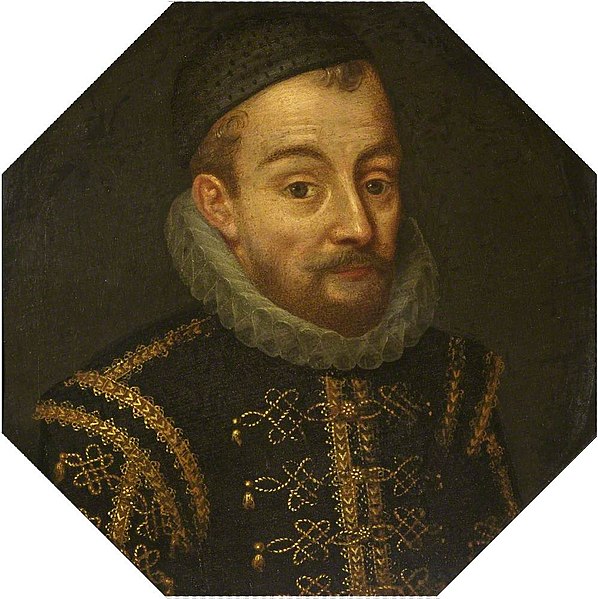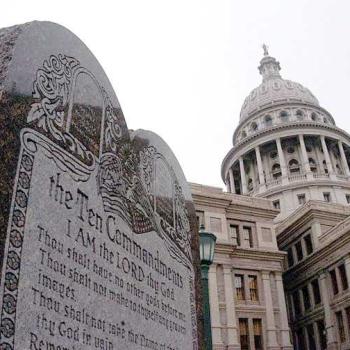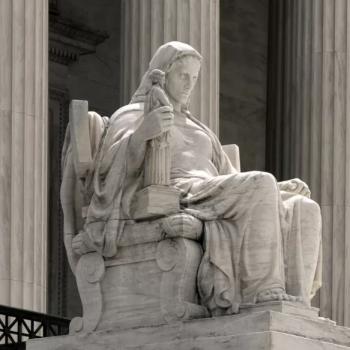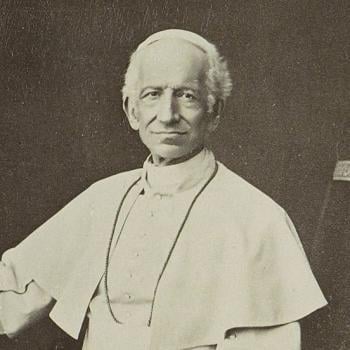William I, Prince of Orange (1533–1584), is remembered as a champion of religious freedom. He also is remembered as the father of the Dutch Republic. This Republic was a confederation of provinces that was pulled apart in 1795 by friction between republicans and monarchists, and then its territory was absorbed into Napoleon’s French Empire in 1806. As I understand it, it was a small country that fell within the boundaries of the current nation of the Netherlands, but you should double-check that before you write it on your term paper.
William’s stand for religious freedom was a dangerous thing in 16th century Europe, when wars of religion were raging. The Reformation had begun in 1517, and after that there was one war in Europe after another for the next two hundred years. As is often the case with “religious wars,” many of these wars were more about trade, territory, and political power than about religious doctrine (see “Reflections On War And Religion“). But many really did determine which nations, and which people, would be Protestant or Catholic. Most of the time it was required that a people share the religion of their monarch.
But even though the Calvinist-influenced Dutch Reformed Church was the established state religion of the Dutch Republic, citizens were free to be Catholic, and Lutheran, and Jewish. Many Sephardic Jews escaping Spain and Portugal in the 16th century moved into Amsterdam and other Dutch cities. Amsterdam in the 17th century was sometimes called the “Dutch Jerusalem” for its thriving Jewish community. And much of this religious freedom came about because of the example set by William I of Orange.
William I of Orange: Early Life
William was born in 1533 in a castle in Germany, the son of a Count. His mother raised him to be Lutheran. After the death of a cousin in 1544 he inherited the title Prince of Orange along with the principality of Orange and several baronies and manors in France and the Low Countries. Charles V (1500-1558), the Holy Roman Emperor of the House of Habsburg, decided that the Prince must convert to Catholicism to receive this inheritance. The pubescent William became the ward of Charles V and went to live at the court of Charles’s sister, Mary of Hungary. Mary was regent of the Netherlands at the time. As an adult William displayed great skill at diplomacy. He was called “William the Silent” because of his discretion in diplomatic negotiations. He married a very wealthy heiress named Anne and had a son and a daughter.
Charles V abdicated in 1556, and rule passed to his son, Philip II of Spain. Philip saw himself as a defender of Catholicism against Protestantism. Among his other moves, Philip was the one who sent the famous Spanish Armada to England to overthrow the Protestant Queen Elizabeth I and make England a Catholic country again. You might remember that effort failed, and Elizabeth I continued to reign. But Philip was determined to root out and destroy anything he considered heresy. Books were banned, and burned. Even respected Catholic clergy had to be careful what they said, because if it was too sympathetic to Protestantism they might be imprisoned. Charles V already had introduced the Inquisition to the Netherlands and banned all forms of Protestantism, but Philip intensified these measures. Thousands were prosecuted and executed.
Philip appointed William to his Council of State and made him governor of four provinces. But William, and many of the other lords of the lowlands, were disatisfied with Philip’s autocratic rule. Eventually they also became alarmed at the ruthlessness of the Inquisition. The lords were Catholics, but many had friends and family who were Protestant. Many also had been influenced by the writing of Desiderius Erasmus of Rotterdam (1467?–1536). Erasmus was a humanist who combined Christian and classical philosophical thought. Erasmus persuaded many that people could think for themselves.
William I of Orange: The Resistance Begins
Through his adolescence and early adulthood, the Prince of Orange had dutifully played the roles that Charles V and then Philip II had assigned to him. But then he changed. His wife Anne died of disease in 1558, and the 25-year-old William mourned her deeply. In 1561 he married again, to Anna of Saxony, a Lutheran. This marriage was problematic and was annulled ten years later. Still, marriage to a Lutheran was a dangerous act, although Anna of Saxony somehow managed to not be called to the Inquisition.
Meanwhile, William was struggling with his conscience. Since moving from his parents’ castle as a child he had not expressed rebellion against his rulers, either Charles or Philip. But in 1564 Philip issued an edict about enforcement of anti-Protestant decrees of the Council of Trent. Shortly after, William broke his silence and gave a speech to the Council of State that really did change the course of history. To a stunned assembly, William publicly declared that while he had decided for himself to remain Catholic, monarchs had no right to dictate the religious beliefs and observances of their subjects. Religion was a matter of personal conscience, William said. Most of us today might agree with William, but in 16th century Europe this was a dangerous thing to say out loud.
Philip went ahead with his plans to suppress all traces of Protestantism, and William’s position was perilous. As other nobles — including William’s younger brother Louis — formed an alliance to try to at least moderate Philip’s anti-Protestant policies, William stood apart and did not openly confront Philip, yet. The situation changed in 1566, when mobs of Protestants — mostly Calvinists — began attacking Catholic churches. Philip appointed a new captain general to the Netherlands who took the Inquisition to new and horrific levels. The council established to manage the Inquisition soon was called the “Council of Blood” because of all the executions.
Birth of a Nation
In 1567 William received a summons to appear before the Inquisition’s “Council of Blood.” He did not appear and was declared an outlaw. By then he had fled to his parents’ territory in Germany. Other like-minded nobles who remained in the Netherlands were executed. Soon William was the leader of an armed resistance to Catholic rule of the Netherlands. This was the beginning of the Eighty Years’ War, which I’m not going to review here except to say that initially it did not go at all well for the rebels. But by 1579 the Dutch Republic had formed and declared its independence from the rule of the Hapsburgs, although that was not the end of all the fighting.
The next question was, who would rule this new Republic? It wasn’t exactly a republic of elected representatives. And William, the father of his country found himself in hot water. He supported Francis, Duke of Anjou and brother of King Henry III of France, as the new nation’s new sovereign. To cut another long story off at the knees, this did not work out, and William was discredited. Meanwhile, the provinces making up the confederation would choose an official called the stadtholder, or steward, to head the province. Four of the provinces named William as their stadtholder, which made him a de facto sovereign of a sorts. By 1584 he had married his fourth wife and had settled into a small estate in Delft.
Sadly, later in 1584 a fanatical Catholic and supporter of Philip II entered the Prince’s home and shot him in the chest at close range, killing him. His son with Anna of Saxony, Maurice of Orange, succeeded William in most of his stadtholder positions.
Postscripts
When the Netherlands gained its independence from France in 1813 it became a constitutional monarchy, the Kingdom of the Netherlands. The Netherlands also has been a parliamentary democracy since 1848.
In the 17th and 18th centuries Europe enjoyed an intellectual and philosophical movement called the Enlightenment, or sometimes the Age of Reason. Most of our ideas about human rights and civil libereties, including our ideas about religious liberty, grew out of that movement. And the founders of the United States were sons of the Enlightenment. Two centuries after William I of Orange was assasinated, James Madison would write, “The Religion then of every man must be left to the conviction and conscience of every man; and it is the right of every man to exercise it as these may dictate. This right is in its nature an unalienable right. It is unalienable, because the opinions of men, depending only on the evidence contemplated by their own minds cannot follow the dictates of other men.”
This was a revolutionary idea in the 18th century; how much more revolutionary was it in the 16th? In 1564, when William made his famous speech on religious freedom, he was leading the way.














